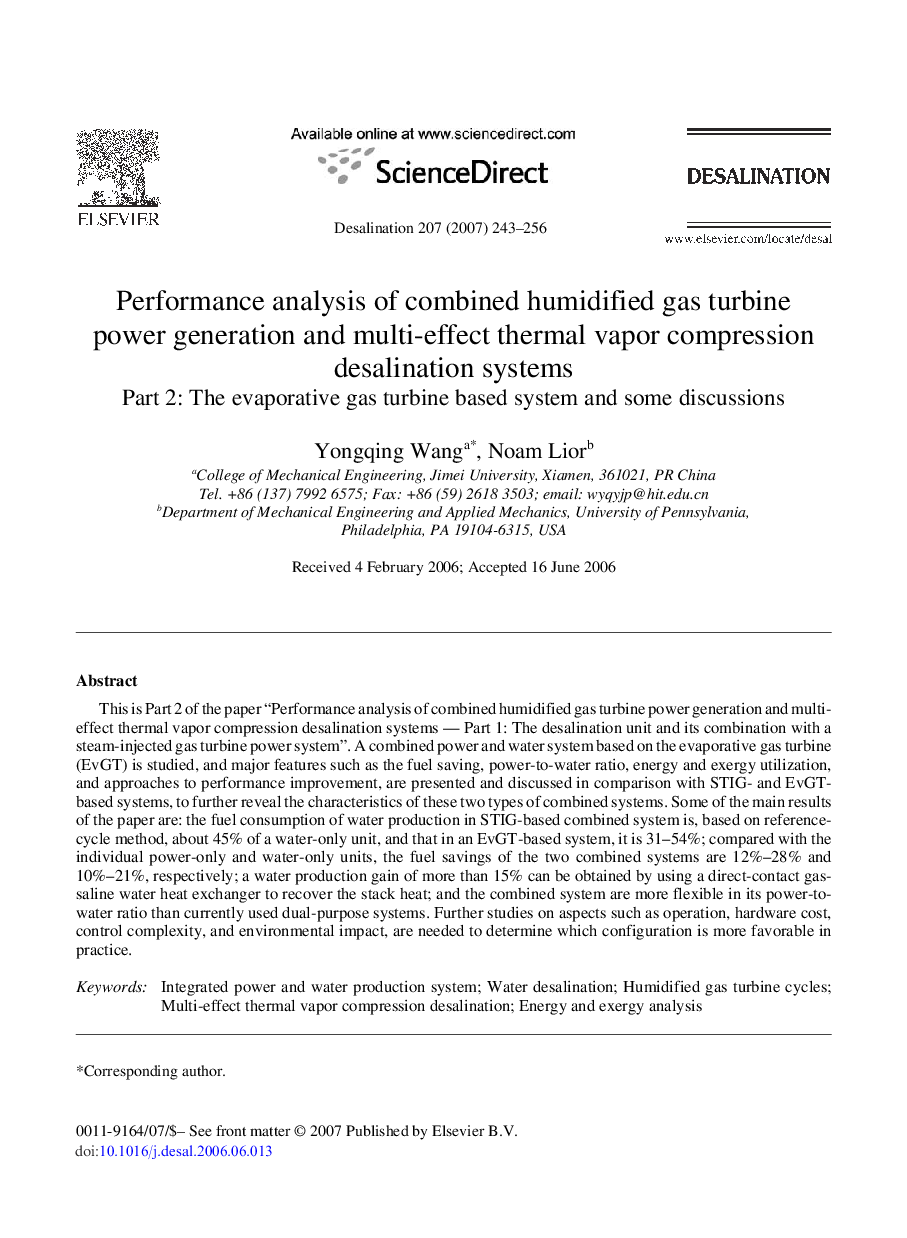| Article ID | Journal | Published Year | Pages | File Type |
|---|---|---|---|---|
| 628307 | Desalination | 2007 | 14 Pages |
This is Part 2 of the paper “Performance analysis of combined humidified gas turbine power generation and multi-effect thermal vapor compression desalination systems — Part 1: The desalination unit and its combination with a steam-injected gas turbine power system”. A combined power and water system based on the evaporative gas turbine (EvGT) is studied, and major features such as the fuel saving, power-to-water ratio, energy and exergy utilization, and approaches to performance improvement, are presented and discussed in comparison with STIG- and EvGT- based systems, to further reveal the characteristics of these two types of combined systems. Some of the main results of the paper are: the fuel consumption of water production in STIG-based combined system is, based on reference-cycle method, about 45% of a water-only unit, and that in an EvGT-based system, it is 31–54%; compared with the individual power-only and water-only units, the fuel savings of the two combined systems are 12%–28% and 10%–21%, respectively; a water production gain of more than 15% can be obtained by using a direct-contact gas-saline water heat exchanger to recover the stack heat; and the combined system are more flexible in its power-to-water ratio than currently used dual-purpose systems. Further studies on aspects such as operation, hardware cost, control complexity, and environmental impact, are needed to determine which configuration is more favorable in practice.
